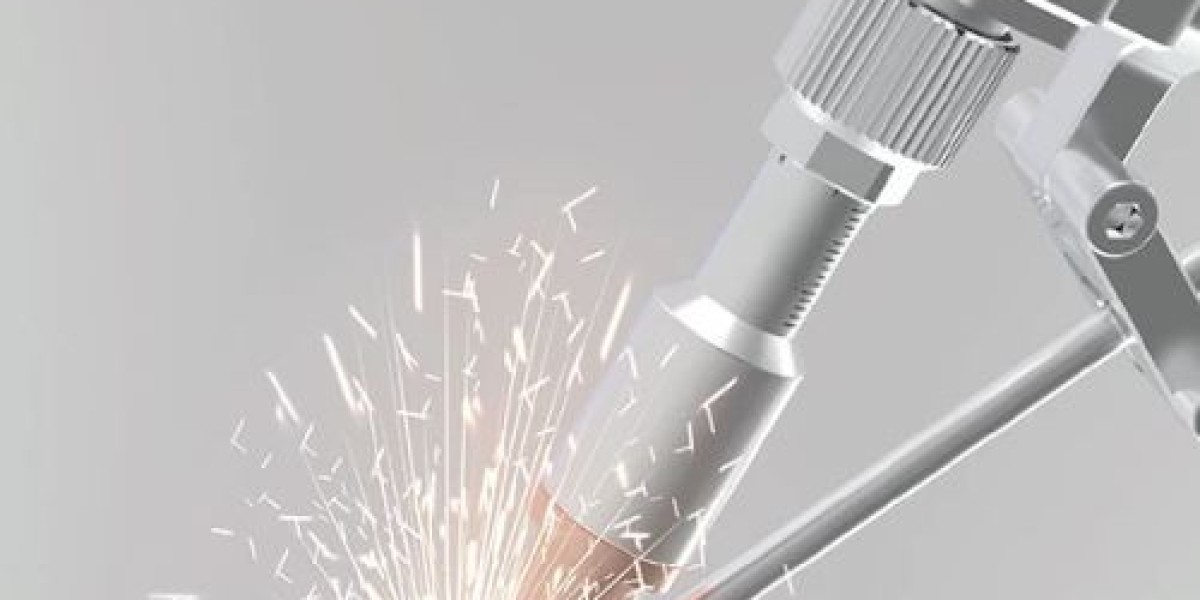In today’s fast-paced industrial landscape, manufacturers are under constant pressure to improve precision, productivity, and cost efficiency. One game-changing technology that’s gaining traction across sectors is the laser welder. In this article, we’ll explore how laser welding systems are transforming fabrication workflows, and why LaserChina stands out as a premier B2B supplier of these solutions.
The Emergence of Laser Welding in Modern Manufacturing
Traditional welding methods such as TIG, MIG, spot, or resistance welding still play major roles in many industries. However, as materials get thinner, tolerances tighter, and production cycles shorter, the limitations of conventional approaches become more apparent. Enter the laser welder — offering narrow heat-affected zones, minimal distortion, and high repeatability.
In applications from automotive assembly to electronics housing, jewelry repair, and battery pack manufacture, a laser welding system can deliver ultra-fine control over weld seams, consistency across batches, and reduced rework rates. The result: lower scrap, higher quality, and better overall throughput.
Key Features That Distinguish High-Performance Laser Welding Systems
Precision & Beam Control
One of the main advantages of a laser welder lies in its ability to focus energy into a small spot with high coherence. This enables micro-welds, seam welding, and spot welding with extremely tight tolerances. Advanced systems offer adjustable beam parameters (CW, pulsed, QCW) to optimize for different metals and thicknesses.
Thermal Management & Distortion Minimization
Because the laser delivers rapid, localized heat, distortion is minimized. A well-designed laser welder system includes effective cooling (air or water), thermal compensation algorithms, and real-time monitoring to prevent warpage. This is especially critical when welding thin foils, battery tabs, or fine jewelry.
Automation & Integration Capability
In a B2B context, the ability to integrate a laser welder into robotic arms, CNC platforms, or automated production lines is vital. Many modern systems support interface protocols (Ethernet, CAN, industrial buses) so that downstream quality inspection, loading/unloading, or material handling can be smoothly orchestrated.
Material Versatility & Process Flexibility
Leading systems support welding of stainless steel, copper, aluminum, nickel, and even some dissimilar metal joints. With hybrid modes (pulse + continuous), modulation, and variable focal depth, a single laser welder can serve multiple product lines. Adaptive control also enables real-time adjustment when encountering variances in part geometry.
Safety & Process Monitoring
Industrial safety standards demand comprehensive protections around any high-power laser. A robust laser welding solution includes shielding, interlocks, beam enclosures, sensors, and software to monitor weld quality (e.g. photodiodes, thermal feedback). These measures ensure consistent output and compliance with ISO/CE standards.
Why LaserChina Is a Strategic Partner for B2B Buyers
Extensive Experience & Global Reach
With over 20 years in laser manufacturing, LaserChina has built a reputation for delivering dependable, cost-effective laser equipment. The company serves 2,000+ clients across 70+ countries, with 10,000+ units sold annually. Their scale gives industrial buyers confidence in support, parts, and long-term service.
Diverse Portfolio of Laser Welding Machines
LaserChina offers a full suite of laser welding solutions, including handheld laser welder units, robotic laser welder stations, automatic laser welder systems, and specialized jewelry laser welder configurations. Because they control the design and manufacturing, they can tailor beam paths, cooling strategies, or controller logic to your specifications.
Strong Quality Assurance & After-Sales Support
LaserChina emphasizes secondary quality control, CE/ISO certifications, and a warranty backed by their in-house repair centers. This attention to quality is especially critical when clients rely on laser welding for mission-critical production lines. Having a supplier who can rapidly service or supply replacement modules is a decisive advantage.
Competitive Pricing & Margin Potential
Because LaserChina’s manufacturing operations are optimized for volume, they can offer laser welder systems at lower cost points than many Western OEMs. For B2B buyers, this means lower capital expenditure and stronger ROI. For channel partners or distributors, the margin potential is attractive — the company actively seeks global distributors.
Seamless Integration with Other Laser Technologies
Beyond welding, LaserChina offers laser cleaning, marking, cutting, and engraving systems. This means one trusted partner can supply a broad spectrum of laser process equipment. For firms planning to build comprehensive laser lines, the integration, logistics, and support synergies can simplify procurement and maintenance.
Best Practice Use Cases & Deployment Tips
Automotive & Battery Pack Assembly
In battery tab welding, the tight tolerances, thin copper foils, and need for minimal heat spread make a laser welder ideal. LaserChina’s robotic or inline laser welding stations deliver consistent weld strength while maintaining minimal distortion.
Jewelry & Watch Repair
For artisan-scale operations, a compact jewelry laser welder from LaserChina enables micro welding on rings, clasps, or fine parts. The low-heat nature allows delicate work without damaging stones or finishes.
Electronics & Microfabrication
Small enclosures, connectors, or meshes benefit from precise laser welding. With real-time feedback controls, LaserChina systems help maximize yield and ensure electrical continuity across micro joints.
Tool Repair & Mold Maintenance
Repairing molds or tooling often demands material addition and re-welding of small cracks. A portable or handheld laser welding system gives maintenance teams the flexibility to perform on-site repairs with minimal downtime.
Deployment Tips for B2B Users:
Evaluate cooling capacity: always match the cooling (water/air) to your duty cycle to avoid thermal drift or shutdowns.
Use sensors and feedback loops: a closed-loop photodiode or temperature sensor ensures consistency weld-to-weld.
Design fixturing carefully: laser welds are highly repeatable, so precise part placement pays big dividends.
Protect optics: contamination can degrade beam quality, so include protective windows, purging, and regular cleaning.
Plan for spare modules: due to high usage, plan a spare laser head or power supply for quick swap to keep uptime.
Integrating Laser Welding into Long-Term Manufacturing Strategy
For industrial buyers, adopting a laser welding approach isn’t just about buying a machine — it’s about transforming capabilities. A laser welder becomes a portal to tighter tolerances, faster cycles, and lower waste. Over time, manufacturers can consolidate multiple joining processes into a unified laser line, reducing complexity and improving throughput.
When scaling, ensure that your supplier can support expansions, customization, and field service. LaserChina’s experience across markets and commitment to distribution make them a reliable partner for long-term growth.
Final Thoughts
Laser welding is no longer a fringe or exotic technology. As materials advance and precision demands rise, a laser welder is becoming a must-have tool in high-value manufacturing. In the B2B landscape, LaserChina distinguishes itself by offering a combination of deep domain experience, comprehensive product lines, and global after-sales support.



